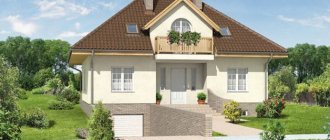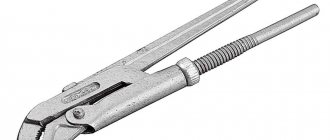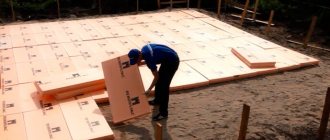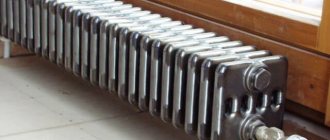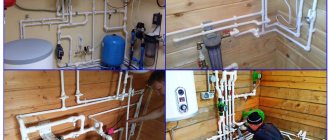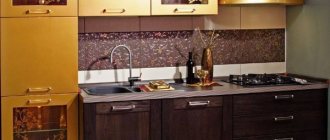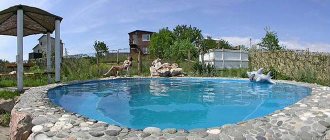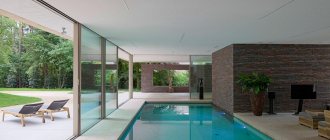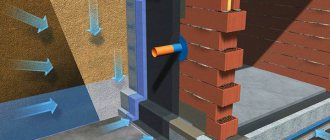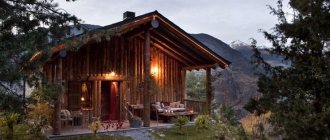Swimming in the pool allows you to keep your body muscles toned and have a lot of fun. For this reason, the popularity of private pools in private mansions and estates is quite high. But creating a swimming pool in the basement is not so easy, since you need to take into account the engineering and architectural requirements, of which there are many.
The pool must be located in a well-chosen location so that there is direct access to it and the possibility of safe operation. There are different types of structures, but all of them, in most cases, if not always, are installed in the basement or on the lower floor.
Install a swimming pool in the basement of your private home
Requirements for the construction of a basement with a swimming pool
Before building a pool in the basement, you need to measure the room. One of the most important conditions is the height of the ceiling. It must be at least 2.8 meters. This is due to the need to design a ventilation system, air conditioning and lighting.
Construction in the basement is the optimal solution. The structure must be deepened by at least 1/2 of the height. But the optimal solution is to completely bury the container to a depth of 3 meters underground. If the basement is underground, then the tank needs to be deepened even more - up to 4.5 meters.
The volume should be planned based on the purpose of the pool. The most common option used in private homes is a structure 8 m long, 4 m wide, 1.5 m deep. With such characteristics, plastic cannot be used, since it does not withstand stress and collapses. The concrete monolithic option is the most reliable and durable.
Before starting construction, it is necessary to examine the groundwater, which must be located at a depth of at least 1.5 meters. Compliance with this condition is mandatory, since no water should appear during land acquisition. It will interfere with construction.
A prerequisite for construction is the construction of an insulating layer between floors. A swimming pool in the basement means constant moisture.
In this video we will look at a swimming pool in the basement of a private house:
And moisture has a detrimental effect on many materials, especially wood.
Pros and cons of a stationary pool in the courtyard of a private house
Placing a pool on the site is more profitable than inside the cottage. In this case, the structure does not have a negative impact on the residential building: it will not be humid inside, and there will be no need to install a ventilation system. Heating and lighting costs will not increase.
What other advantages does a stationary pool have on site:
- you can swim any time you want, except perhaps in winter;
- your family will relax near the water in hot weather;
- small children will enjoy swimming;
- a stationary outdoor pool is an opportunity to have fun;
- when it’s far away from a river or lake, you can quickly cool off in the pool;
- If the pool is kept clean, it will beautify the area.
What are the disadvantages of a stationary structure?
To maintain an outdoor pool, you will have to spend a lot of money and effort. It is necessary to regularly clean the bottom and walls, replace the water, and add chemicals to prevent the water from blooming. However, they should be used with caution, since the “chemistry” has a detrimental effect on health.
You need to think about where you will drain the water. If chemicals are used, you should not water your lawn or garden with water. However, it will have to be changed, which means that a place for draining water should be equipped in advance.
For the winter, such a pool will have to be mothballed. It needs to be cleaned, the water drained, the filters and heating system removed, the drains closed, and filled with water and a preservative. This procedure will require time and labor.
The outdoor pool is inferior in terms of comfort to the swimming lanes in the cottage. But you will notice the difference only if you live outside the city all year round and will not be able to swim in autumn and winter.
But when you have a summer house or cottage, it is recommended to choose an outdoor pool. Its cost is low, but adults and children will feel comfortable swimming in such a pool.
Types of basement pools
Depending on the availability of premises, space and possibilities, you can use one of the types of basement pools:
- monolithic;
- frame;
- inflatable.
The most difficult thing to build is a monolithic pool, since it is necessary to dig deep into the ground, use reinforcement, heavy materials, and install upholstery. If the owners do not intend to use it often and take care of it, it is easier to purchase an inflatable pool. Children will love swimming in it.
We are drawing up a project
After we have analyzed all the nuances, we can proceed to creating the project and drawings.
The size of the room for the steam room depends on the availability of free space and the tastes of the owners, but it is recommended to focus on 12-14 square meters. m. Such an area will allow 3-4 people to comfortably stay in it at the same time, equip a shower stall and a dressing room.
The optimal ceiling height is 1.8-2 m. If made higher, it will complicate rapid heating, and if it is lower, it will create difficulties for tall people.
The average recommended steam room size is 3 square meters. m. Again, if you build more, it will require a more powerful and expensive heating system. Such rooms are characterized by the arrangement of several tiers of shelves, up to 50 cm wide, with the same distance from the floor.
Important! When including finishing materials in the upcoming estimate, it is important not to forget that all of them must be moisture-resistant and fireproof.
Two of the four walls of the steam room must be adjacent to the walls of the main building. It is important to have the ability to organize ventilation, water supply and drainage, and power supply.
Monolithic pool
The main distinguishing feature of the monolithic version constructed in the basement is its heavy and durable structure, the construction of which requires a lot of effort. An important stage of construction is the calculation of the bearing capacity of the foundation.
Compared to frame pools, monolithic structures require more labor and money. The bowl can be finished using various materials, but the use of hydraulic concrete will remain unchanged.
The use of hydraulic concrete is due to the fact that it is waterproof. There are two options: make it yourself or order it from the factory. It is impossible to create concrete without a mixer, binder, filler and additives. This mixture, after hardening, becomes very dense, so it does not allow moisture to pass through. The following contents will improve the properties of concrete:
- ferric chloride;
- silicate glue;
- calcium nitrate;
- organosilicon water repellents.
For the composition to be optimal, it is necessary that the content of any of the above components is not less than 0.5 and not more than 1%.
In addition to the sealant, the composition should be diluted:
- modified calcium oleate – ceresite;
- sodium oleate;
- sodium abietate.
As a result, the developer should get a mixture that, after hardening, has the properties of class B25 concrete, frost resistance F200, and water resistance w8. To do this, it is necessary to use 490 kg of cement grade M400, water in the amount of 202-205 liters, a ton of crushed stone with medium-sized fractions, 0.5 tons of sand, superplasticizer S-3 1.5 kg. In addition, 5 kg of sealant and 1 kg of water repellent.
Planed and unplaned boards, OSB sheets, and plywood are suitable as formwork materials. But it is best to use plastic or metal formwork. Some construction organizations rent out these elements for the construction of a swimming pool.
Powerful washing with a power washer to make your pool deck shine
The area that surrounds the pond is also an important part. You can make it shine with a good wash. It will also help get rid of rust or weather stains that will appear from time to time.
You can rent a washing machine if you are unable to purchase such an item. First, remove everything that is in the way - garden furniture, sun loungers, and so on. Then sweep the surface, removing dirt and leaves, and only after that use the miracle object, following the instructions. Set the spray on low to medium power to remove surface dirt until it comes out clean. You can repeat this process if you see the need.
Frame pool
It is a factory-assembled structure, which includes metal pipes, durable waterproof film, fittings with which the film is attached and the pipes are connected. There are many different shapes and sizes. The customer has a large selection of pools that differ in depth and design. High reservoirs are equipped with small stairs. Factory designs include pumps and filters.
Various pool options will help you choose the most suitable one
A frame pool in the basement of a private house may be of the following type:
- ground sheet, consisting of monolithic sheets, is durable and reliable;
- ground rod;
- for special recesses in the room;
- subcompact;
- all-season;
- for summer holidays.
Attention! It must be taken into account that all of the above structures have film elements that are easily damaged by sharp objects.
Frame structures are installed on a flat surface. You can do the installation alone. This will only take a couple of hours. You can choose a frame structure for a room of any size.
Make scavenging and cleaning a part of your life.
Regularly removing debris and leaves from the surface of the water is already a lot of work. If you have money to spend without a twinge of guilt, consider purchasing a robot vacuum to clean the bottom. For example, the Polaris Pool 360 is an average option in terms of pricing but has great reviews.
In addition, you need to scrub the walls well to prevent algae build-up. Luckily for you, there is no need to do this all the time. You can brush them when you start to notice small growths. What to do with those stains that are especially difficult to clean? Nothing special, just take a sock, fill it with chlorine and leave it there for a few hours. Most often these are corners.
Water filtration
In most cases, skimmer filtration systems are used. The main working device collects the top layer of water, where there is usually the most dirt. The system has a fairly high efficiency when cleaning large elements. Its main disadvantage is that purified water flows back into the pool. Water returns to the system through holes in the walls.
There are also overflow filtration systems, but they are very rarely used in the basement. This is due to the complexity of the design and the need to create large reserves of space in depth and width, which may simply not be enough in cramped conditions.
Device technology
The pool is constructed according to the following scheme:
- A pit no more than 2.5 m deep is dug in the basement.
- Sand, crushed stone, and film waterproofing are placed at the bottom of the pit.
- A two-layer reinforcement is laid and a tiled base is cast, which should have a thickness of 15-20 cm.
- A wall is laid out of FBS, brick or concrete blocks. In this case, double waterproofing of the soil is used.
- A steel frame is formed on top of the stone box using galvanized reinforcement.
- Film waterproofing is laid and the walls and bottom of the pool are reinforced.
- Pouring concrete mortar to the bottom and carefully processing it with a vibratory compactor.
Supply and Demand Analysis
The target audience
As a rule, the main target audience for swimming pools is consumers with an average income level . The ratio of men and women is approximately the same, and the segmentation is extremely broad:
- - mothers with infants;
- - pregnant women;
- - pupils;
- — students and students of specialized institutions;
- - athletes;
- - pensioners.
In addition, there is another group of consumers - corporate clients. These can be both employees of government organizations and employees of commercial organizations. Usually the number of such visitors is ½ of the total mass.
According to the results of a research survey, it turned out that 80% of active Russians want to lead a healthy lifestyle, and 23% are ready to start in the near future. Of those who periodically visit the pool, 47% come there to swim, 25% perceive swimming as a sport, and 18% simply want to be beautiful and healthy.
Market analysis
According to GuideMarket research, the largest operators of the swimming pool market in Russia are fitness franchises Fitness House and X-Fit/Fit-Studio (1.0% and 0.8%). In third place is WorldClass (0.7%). Next come OrangeFitness and SportLife, which occupy 0.4% and 0.3% of the market, respectively. The share of other companies is 96.9%. The main representatives are private, entertainment and sports complexes. Most of them were built on the site of Soviet water palaces or on the territory of modern fitness clubs.
Competitive advantages
To determine the strengths of your business, you need to analyze your competitors. Open Yandex.Maps and carefully study the proposed location. Your direct competitors are city swimming complexes and fitness clubs . Indirect - hotels, saunas and any places where there is a swimming pool . Evaluate your competitors based on the following parameters:
- - Interior Design;
- — convenient location;
- — proximity to public transport stops;
- — availability of parking;
- — level of service and prices;
- — employee experience;
- — range of services;
- — frequency of promotions and discounts;
- — availability of loyalty programs.
Rough stages of construction work
Before the pool in the basement becomes a place for relaxation and training, you will have to work hard and complete all the rough stages of construction work.
To create a swimming pool in the basement of a private house with your own hands, you need to:
- Choose a place to install the bowl. To do this, it is necessary to assess whether there is enough spare space to move around in the room. Can be placed in the middle of the room or closer to the wall. The main thing is to take into account that it is necessary to make connections and connect communications.
- Build a pit. First, marking is carried out based on the requirements of the project, and after that the excavation of the pit is carried out. As a result, it will be larger than the dimensions of the bowl.
- Crushed stone and sand are poured into the pit and compacted.
- Make a waterproofing flooring and fill it with cement mortar to a height of 15-20 cm.
- Build pool walls using concrete blocks, bricks, FBS.
- Reinforce the walls with the formation of a steel frame, laying waterproofing, and installing formwork.
- Fill the walls and bottom with concrete. Using special grades of cement and working with construction tools will create a smooth and impenetrable wall.
Common Mistakes
You shouldn’t assume that if you turn to specialists, you won’t have to check or approve anything. There are often situations when builders fill a pool and do not provide for the placement of an overflow tank. It is located below the artificial reservoir itself (otherwise water will not be able to flow into it on its own). This means that a basement will be required, that is, a technical room for the pool.
It happens that some designers not only forget to take this nuance into account when building an overflow pool, but do not even include it in the project. Therefore, be sure to agree on all the details. If the installation is not carried out properly, then you will have to solve this problem by installing special plastic containers that are designed for a volume of up to 5 tons. If you require more products, you will have to call a specialist who will cook polypropylene directly on site, if the height of the pool allows. It’s not hard to guess that all this will result in another expense item.
Also, sometimes openings for embedded parts are not taken into account. This again happens more often in cases where a detailed design for the future pool is not drawn up. After this, the builder can say that he cast the bowl of the right size, and the rest is not his concern. But in addition to the tank itself, there must also be pipes, and therefore outlet openings in the form of mortgages.
It is important to make sure that the pipes are laid during the reinforcement process, immediately after the first layer has been connected. This applies to those cases when the bowl is not bypassed and is not suspended on special supports. If there are no openings for the mortgages, then you will end up having to drill and chisel the concrete. This will require jackhammers. It is not difficult to guess that their use is most likely to create a lot of cracks in monolithic concrete.
Healthy! Moreover, not only must there be openings, they must be exactly the size specified in the Specification of openings for mortgages. If they are smaller, then the mortgages will not fit into them, which means you will still have to use a bumper.
Finishing work
After the rough work, finishing work begins. First you need to select the material. But before finishing begins, it is better to install an acrylic liner into the structure of the bowl, which prevents the structure from leaking during use. It is important that all walls and ceilings are waterproofed. This can be achieved through the use of waterproof plaster or other means.
In addition, ventilation is provided to remove moisture from the basement. A supply and exhaust system, which has an air recovery function, will reduce the humidity level in the room to a minimum.
Once these systems are installed, the bowl can be finished. This is the final stage, the quality of which will determine the evenness of the surface and the aesthetic appearance of the pool.
How to build saunas and baths in basements
The most popular materials for the construction of these premises are ready-made sandwich panels or frames made of beams. The second option is more popular, as it is up to 20-30% cheaper.
With a frame system, all elements are measured locally and one by one. First of all, the load-bearing beams are mounted, and then the horizontal crossbars are installed on them. External walls are covered with plywood or clapboard.
Finishing facilities
Everyone wants their home to be original, not like others, and decorated only with high-quality and natural materials. The same can be said about the sauna, which not only improves the health of the owners, but is also a room that you want to show off to friends and relatives. Therefore, it is important not only to design a functional steam room, but also to give it a presentable appearance.
Decorative wall cladding
Natural materials are used to decorate saunas. It can be deciduous trees and stone. The wood is not properly coated with varnish or paint, leaving it in its original form.
Important! The use of building materials containing pine needles, which release thick gluten and sticky resins when the temperature rises, is strictly prohibited.
Floors
Most often, during construction, a foundation is made, which is poured from above with a large amount of liquid concrete mortar. To prevent the floor from burning your feet, it is sheathed on top with boards or laid with regular tiles, on top of which boards or wooden pallets are placed.
Doors
When choosing doors, it is better to give preference to materials that are resistant to changes in temperature and humidity. The canvas should fit snugly against the walls and not contain metal elements, especially with regard to door handles. If they overheat, they simply cannot be used.
The most practical are wooden and glass doors or combinations thereof.
Lighting
It is the organization of lighting that can truly decorate a sauna and give it an individual style, creating a unique and, at the same time, cozy atmosphere for relaxation and rest. Multi-colored LEDs that illuminate the edges of the floor or provide diffused light under the indented slats will help create a bright room or plunge the space into intimate twilight.
The solution for arranging light in a sauna is not limited by anything except your imagination. But you need to carefully follow the wiring rules and provide protection for the wires to avoid damage and fire.
Stove and stove stones
The stove is the main element of the sauna. There is a wide range of these products on the modern market; these can be wall-mounted or floor-mounted devices.
Usually the body of the furnace is made of non-heating materials, but it is better to provide a fence for it. The parameters and size of the heating installation are selected taking into account the area and height of the steam room ceilings, taking into account efficiency, safety and with an emphasis on compactness.
Stones are placed in the oven: evenly, but with gaps, to ensure effective air circulation. The stones selected are resistant to temperature changes and have a high heat capacity.
To create a Russian bathhouse, the stove is made of brick. To do this, a foundation is first built at a short distance from the wall. Afterwards, a pit is dug, and crushed stone is poured into it and compacted well, after which the solution is poured. Before reaching the floor level, brick is laid and a sand cushion is installed. The stove is installed so that there is an air flow to it; a pipe is removed from it through a specially made hole in the base of the building.
Installation of equipment
The equipment is installed according to a finished project. First of all, the equipment is assembled, all threaded and adhesive connections, couplings, taps and other important elements are checked. After the equipment is installed, it is necessary to fill in water and turn on the filters for washing.
If there are no leaks, we can conclude that the installation was completed correctly. Installing special equipment is a rather complicated operation, but you can do it yourself using the instructions. It is best to use the services of specialists to perform installation.
Features of constructing a swimming pool with your own hands
A DIY basement pool is double the fun.
But you need to understand that all operations should be carried out after agreeing on the project with specialists, since the ground floor is the foundation of the entire house. If you make a mistake in even one operation, you can weaken the lower, fundamental part of the house. This is interesting: How to make a sauna in a basement.
It is necessary to think through every step, using special concrete mixtures, waterproofing, and reinforcement. For more pleasure, you can use hydromassage, steam room, build a sauna and even a gym.
Conclusion
If desired, from a lifeless basement or basement in a cottage, you can create an entire multifunctional floor where it will be possible to spend time comfortably.
Subject to all standards, careful design study and construction supervision, you can easily create a bathhouse or sauna in the basement of your house, equipped with a swimming pool, showers, relaxation areas and other necessary elements. Use high-quality materials, do not neglect safety precautions, and then the bathhouse will delight you for many years.
Did you find this article helpful? Please share it on social networks: Don't forget to bookmark the Nedvio website. We talk about construction, renovation, and country real estate in an interesting, useful and understandable way.
